The axe is a timeless tool that belongs in every shed or garage. When you need to split some thick pieces of wood, the axe is the answer. Perhaps you're new to this amazing tool or are simply curious about what the different parts of an axe are. We did the research to bring you the answer.
Parts of an axe head:
- Eye
- Cheek
- Toe
- Bit
- Heel
- Beard
- Butt
Parts of an axe handle:
- Shoulder
- Belly
- Throat
- Grip
- Knob
If you still have some axe anatomy questions, don't worry. In this post, we'll talk more about each part of an axe and what its purpose is. We'll also talk about the common types of axes, why axes have notches, how axe heads are attached, and much more. Without further ado, let's get into it!
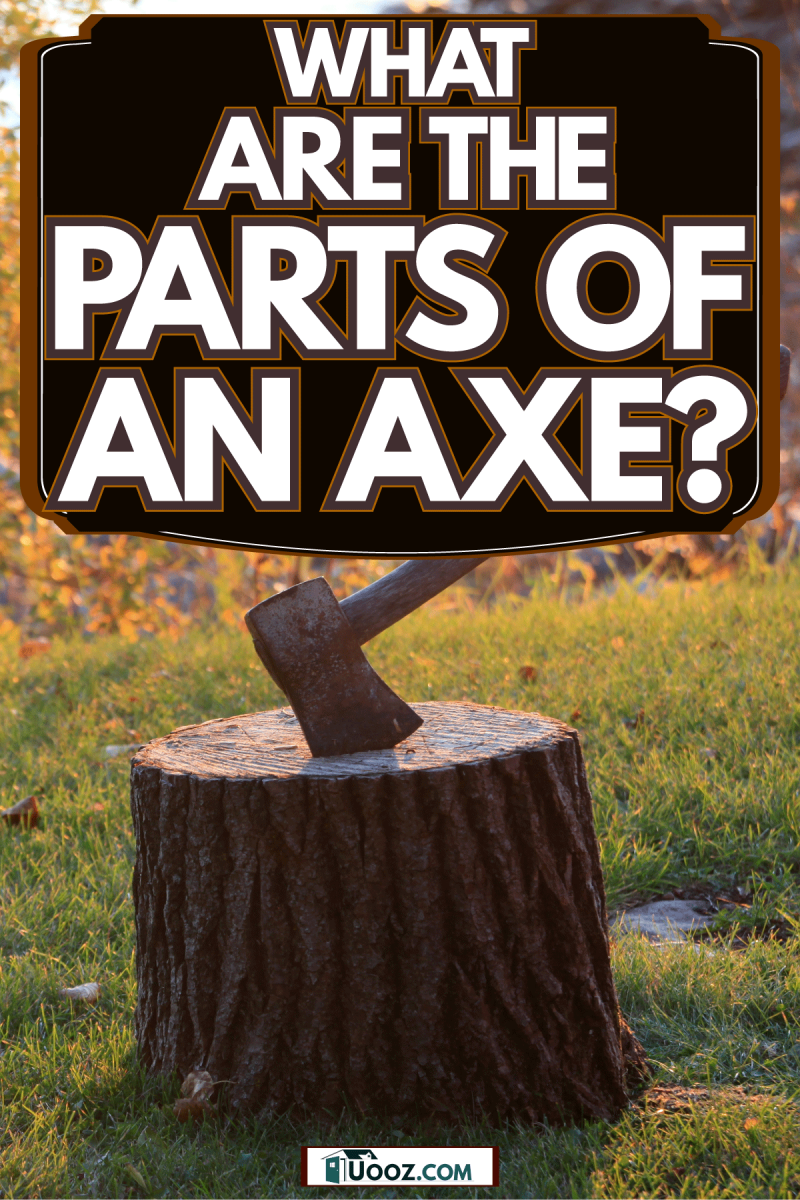
Axe Anatomy
Here we'll talk more about the parts of an axe and the purpose of each.
Parts Of An Axe Head
Axe heads are made of steel. Some axes with a contemporary design feature some kind of synthetic material that partially envelops the axe head.
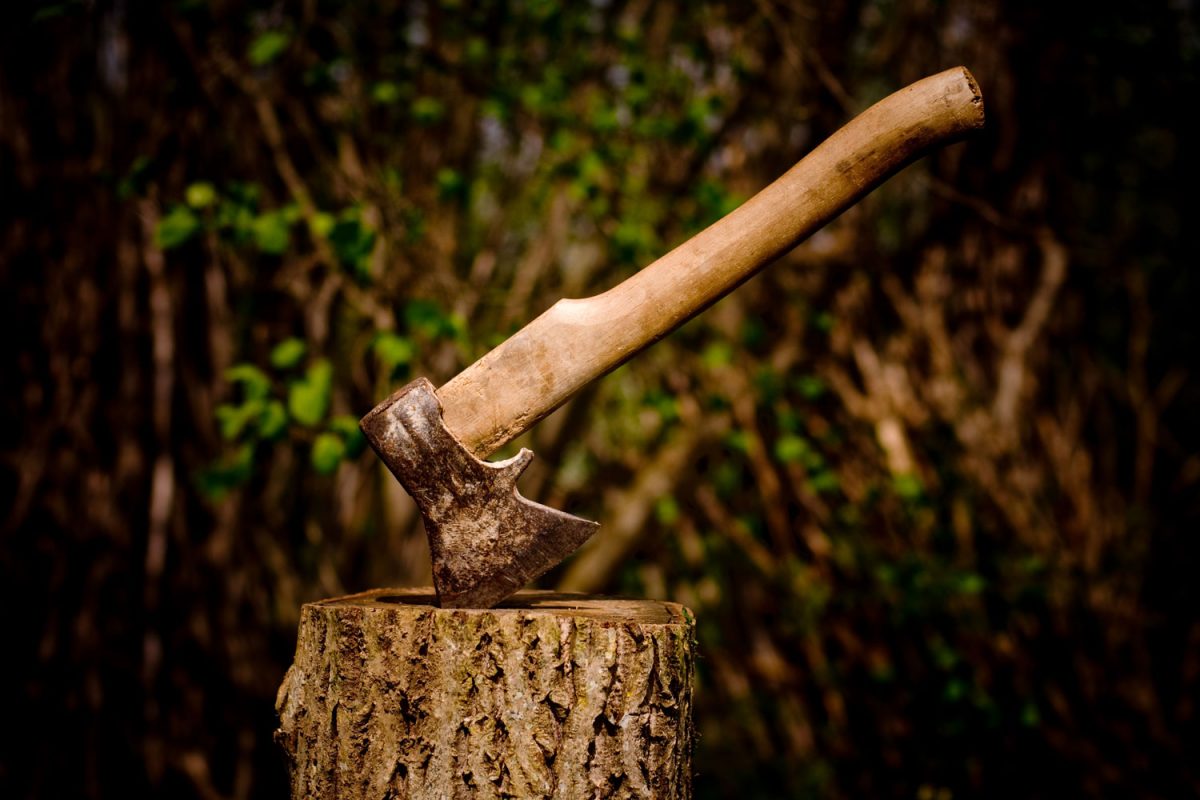
Eye
The eye of an axe head is essentially comprised of the piece of the handle that secures the handle to the axe head along with the round hole on the axe head itself. The eye is the part of the axe that is subjected to the most stress.
Cheek
The cheek of an axe is the long flat portion of the head that separates the blade from the butt. The geometry of the cheek can vary depending on the axe's intended use.
Toe
The toe of an axe is simply the top pointed corner of the blade itself.
Bit
The bit of an axe is the actual blade itself. In other words, the bit is the business end of an axe. When you go to split wood with an axe, the bit is the primary part that makes it happen.
Heel
The heel of an axe is the bottom pointed corner of the blade. Depending on the use scenario, the heel of an axe can be used to puncture an object.
Beard
The beard of an axe is the curved underside of the axe head that runs from the tip of the heel to the handle.
Butt
The butt of an axe is the flat portion on the back of the axe head. The butt helps balance the axe head, but it is also useful for hammering objects.
Parts Of An Axe Handle
Historically, axe handles have been made of wood. But modern axes sometimes feature handles made of synthetic materials.
Shoulder
The shoulder of an axe is the portion just underneath the head on the back of the handle. This part of the handle is typically quite wide compared to the rest of the handle.
Belly
The belly of an axe is the portion on the back of the handle that curves toward the front of the axe.
Throat
The throat of an axe is the portion of the handle just underneath the belly that curves in the opposite direction (toward the back). Together, the belly and the throat create the subtle S-curve that axe handles are known for.
Grip
The grip of an axe is the curved portion at the bottom of the handle. This part of the handle is what the user will grip with one hand. Gripping the axe here with one hand facilitates the leverage and momentum required to split wood.
Knob
The knob of an axe is the very bottom portion of the handle. The knob is wider than the rest of the handle to keep the user's bottom hand securely in place.
What Are The Common Types Of Axes?
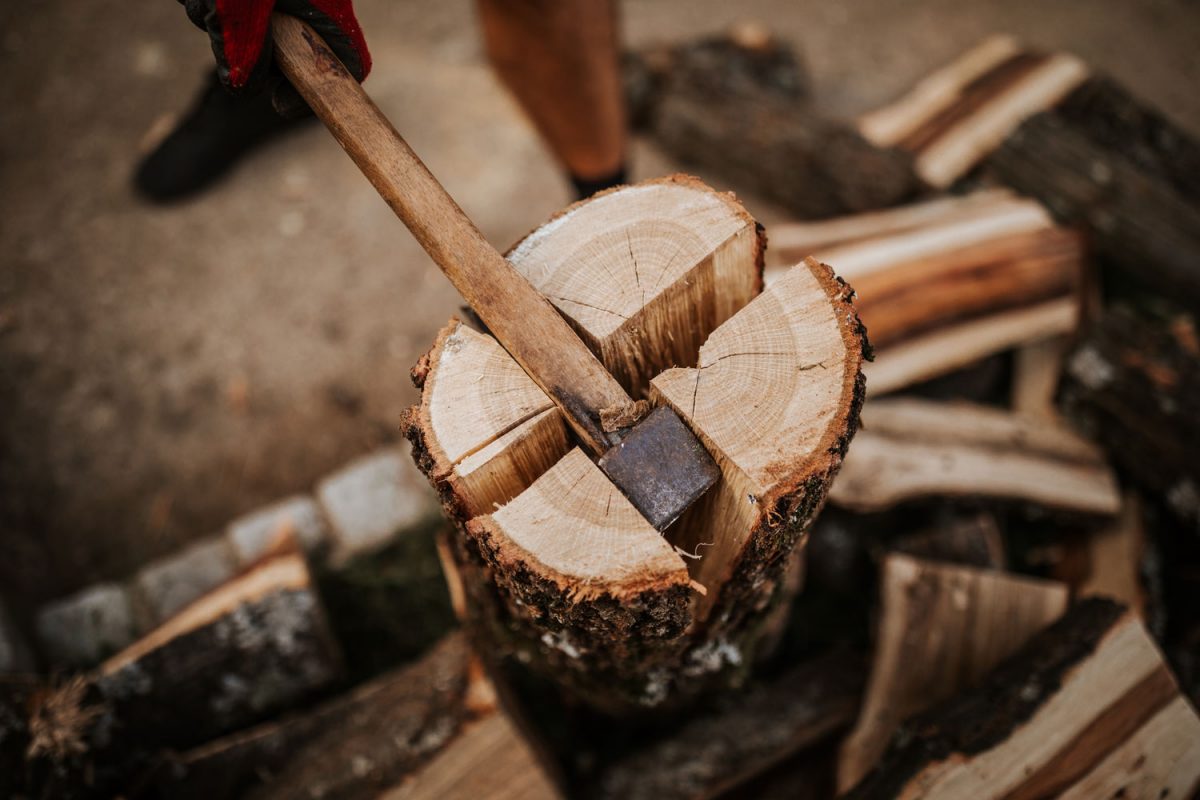
Believe it or not, there are several different types of axes. The designs vary slightly depending on the intended use of each. Here we'll talk about some of the most common types.
Splitting Maul
A splitting maul is designed to do exactly what its name implies—split wood. The geometry of the head makes a splitting maul the perfect tool for splitting logs.
Click here to see this splitting maul on Amazon.
Axe Vs. Splitting Maul — What's The Difference?
A splitting maul falls under the general "axe" umbrella, but it's specifically designed to be swung downward, making it the perfect log-splitting tool.
Felling Axe
A felling axe is what typically comes to mind when one thinks of an axe, except for the fact that some felling axes have a completely straight handle. With their traditional design and geometry, felling axes are designed for cutting down trees.
Though these axes have historically been made with wooden handles, you can find modern felling axes with synthetic handles that make them a bit lighter and easier to handle.
Click here to see this felling axe on Amazon.
Pickaxe
A pickaxe is really only an axe in name only, as its design differs significantly from the other axes discussed here. Pickaxes have a quite distinct design—a flat blade on one side of the head and a long, pointy pick on the other.
There are endless uses for pickaxes, from digging through the soil in the garden to breaking up hard materials. The geometry of the head of a pickaxe makes it a great implement for prying as well.
If there's one type of axe that belongs in every garage or workshop, it's a pickaxe.
Click here to see this heavy-duty pickaxe on Amazon.
Hatchet
A hatchet is quite simply a miniature axe, as its shape is the same as its larger counterparts. Hatchets are ideal for small cutting or chopping tasks that require more precision. Additionally, the butt of a hatchet can make it double as a hammer.
Since hatchets are so much smaller and lighter than larger axes, they can be used more comfortably for longer periods of time, making them ideal for all kinds of non-heavy-duty outdoor applications.
The head and blade architecture of hatchets can vary significantly since there are so many potential uses for them. So, you're sure to find the right kind of hatchet to suit your needs.
Click here to see this hatchet on Amazon.
Axe Vs. Hatchet — What's The Difference?
As mentioned, a hatchet is basically a small version of a standard axe. A hatchet is typically about half the length of a standard axe and a great deal lighter, making it the ideal choice for a wide variety of smaller cutting, chopping, or hammering tasks.
Why Do Axes Have Notches?
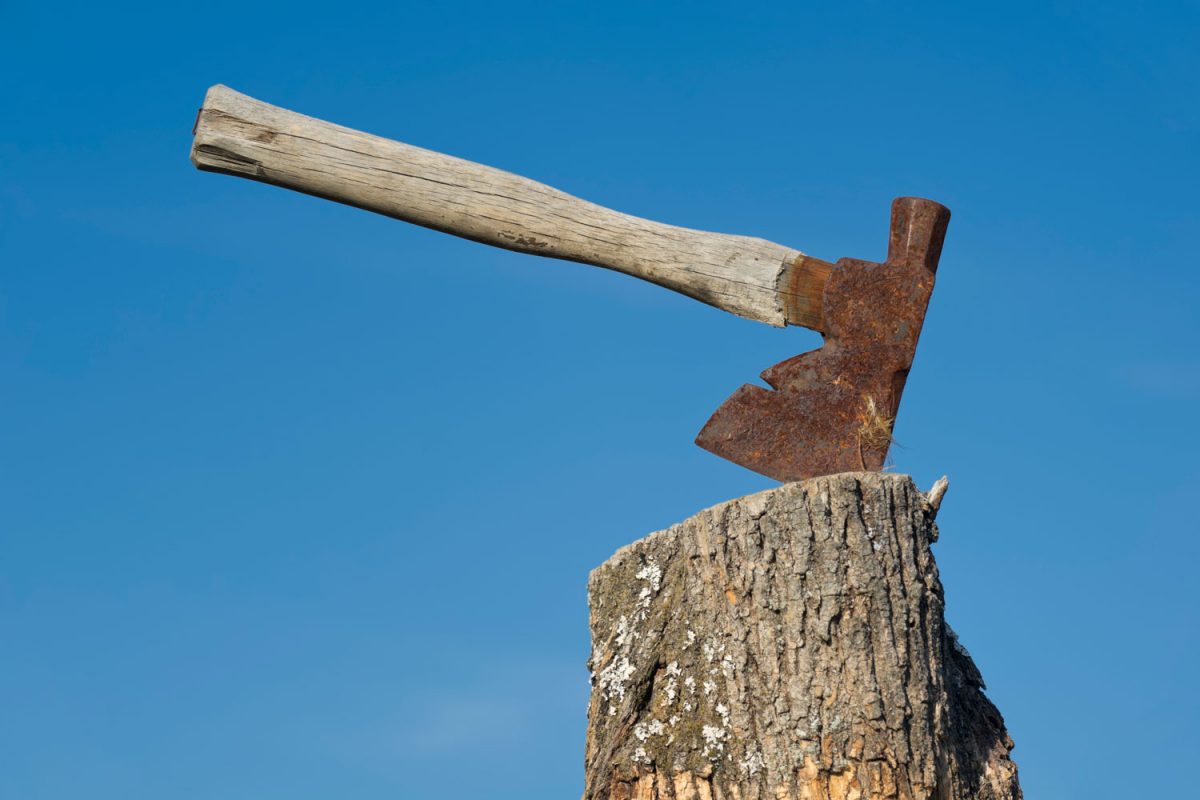
You've probably noticed that some small hatchets have a notch in the head along the beard. This notch can be used to pull nails out of wood just like the claw of a hammer.
Fireman Axe
A fireman axe is easily recognized by the sharp pick on the back of the head and, of course, the head's red color.
Fireman axes are essentially traditional axes with the added bonus of the sharp pick that can be used to puncture all kinds of tough materials and surfaces.
Click here to see this fireman axe on Amazon.
How Are Axe Heads Attached?
Axe heads are subjected to a significant amount of abuse. This may have made you wonder how axe heads are actually attached. Or perhaps your axe broke and you need to attach an axe head to a new handle.
There are several different ways that an axe head can be attached, but one particular method is most common. This method consists of the following steps:
- Cut a slot (known as a "kerf") into the top of the handle.
- Slip the axe head over this portion on the top of the handle, ensuring that the head is at least flush with the top of the handle (it's fine if some of the handle protrudes up past the top of the head).
- Insert a wooden wedge into the kerf, and hammer it in. This will force the sides of the handle on either side of the kerf against either side of the eye, and the resulting friction will hold the head securely in place.
- If needed, cut off any excess wood that protrudes from the top of the eye.
In Closing
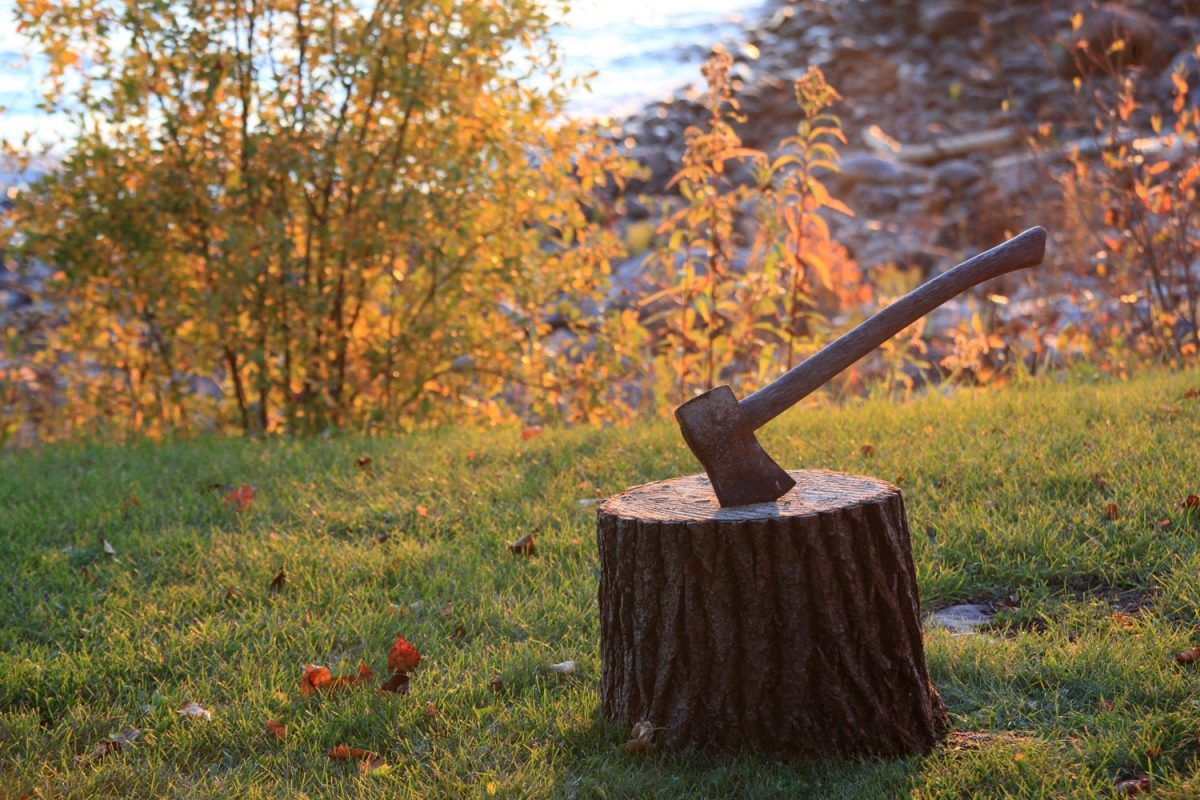
We hope this guide has helped you better understand the different parts of a traditional axe along with the purpose of each. The axe is a tremendously useful tool that can come in handy in a wide variety of scenarios.
Before you go, be sure to check out these other guides:





